Guide to Types of Golf Cart Batteries: Comparing Lead-Acid, Lithium-Ion, and AGM Options
Choosing the right battery for your golf cart can make a big difference. Many types of golf cart batteries are designed to fit different needs. These include flooded lead-acid, AGM, gel, and lithium-ion. Lithium-ion batteries are often the best choice. This is because they last a long time and need little maintenance.
Flooded lead-acid batteries are a common choice because they are cost-effective. However, they need regular maintenance and water refills. AGM and gel batteries are maintenance-free but may come at a higher price. Each type has strengths and weaknesses. You must consider your needs.
Understanding the differences between these batteries can help you make an informed decision. Factors like energy density, self-discharge rate, and cost will influence which type is best for your golf cart. Comparing each battery type's features helps you get the best performance and life for your vehicle.

Understanding Golf Cart Batteries
Golf cart batteries come in various types and setups. Each has its benefits and things to think about. Choosing the right battery involves understanding the types. You need to understand their voltage and capacity and the chemistry behind them.
Types of Golf Cart Batteries
Golf cart batteries usually fall into four main types. These are: Flooded Lead-Acid, AGM Lead-Acid, Gel Lead-Acid, and Lithium-Ion batteries.
Flooded Lead Acid (wet) batteries are the most common and cost-effective option. They must receive regular maintenance, such as adding water and cleaning terminals.
AGM Lead Acid batteries are sealed and maintenance-free but tend to cost more.
Gel Lead Acid batteries need no maintenance. They can also work in a wider range of temperatures.
Lithium-Ion batteries are more popular for retrofitting. They last longer, weigh less, and recharge faster. But, they cost more at first.
Voltage and Capacity
Battery voltage and capacity are crucial for the performance of your golf cart.
The most common configurations include 6-volt, 8-volt, and 12-volt batteries. A 6-volt battery offers the most amps. This means it runs longer between charges.
Typically, a golf cart needs a battery pack. The pack combines individual batteries to reach the needed voltage. For example, a 48V cart often uses six 8-volt batteries or eight 6-volt batteries.
When choosing, it's vital to match the right voltage and capacity (Ah) to your cart's needs. This ensures the best performance and lifespan.
Battery Chemistry Explained
Different types of golf cart batteries have unique chemical compositions. These affect their performance and maintenance needs.
Lead-Acid batteries come in three varieties: Flooded (wet), AGM, and Gel. Flooded batteries need water. AGM and Gel types are sealed and maintenance-free. All three types, however, may lose power as their charge depletes.
Lithium-Ion batteries outperform lead-acid batteries in several ways. They maintain consistent power output, even as they approach the end of their charge. They last longer in discharge cycles. They weigh less and recharge much faster. They typically need no maintenance.
Understanding these properties helps pick the right battery. It should fit the specific needs and budget of the golf cart owner.

Maintenance and Longevity
Proper maintenance and charging practices can extend the lifespan of golf cart batteries. This section covers how to charge right. It also covers how to keep the batteries clean and make them last.
Proper Charging Practices
It's crucial to charge golf cart batteries correctly. To keep them in good shape, charge the batteries between 8 to 10 hours. Avoid letting the charge drop below 20%. Instead of waiting for them to fully discharge, charge them often. This keeps the power levels stable.
Overcharging can harm battery cells. So, a charger with an automatic shut-off is ideal. These chargers stop supplying power once the battery is full. This prevents overcharging and protects the battery's health. Following these steps will help you get the most out of your batteries.
Regular Maintenance
Regular maintenance is essential for the longevity of golf cart batteries. Checking the water levels every 15-30 days is important. Use distilled water to avoid impurities that could damage the battery. It is recommended to clean the battery with a bristle brush and mild cleaner. The cleaner should have anti-corrosive properties.
Be sure to look at the terminals for oxidation or acid buildup. Applying silicone paste to the terminals can prevent these issues. Additionally, monitor the wiring and replace any frayed cables immediately. Reconnect any loose installations to maintain proper connections.
Extending Battery Lifespan
Extending the battery lifespan involves more than just charging and cleaning. Good airflow is important. You need to keep temperatures stable. They should stay between 50 to 80 degrees Fahrenheit.
Using the cart often keeps the battery active. But, long disuse can harm it. Also, keeping a 20% charge or more ensures the battery doesn't get stressed from being too low. Following these practices will help your golf cart batteries last longer. They will also perform better throughout their life.

Selecting the Right Battery for Your Golf Cart
Choosing the best battery for your golf cart involves looking at key factors. These include capacity, voltage, and maintenance. It's also important to compare brands. This ensures you get a reliable, long-lasting battery.
Factors to Consider
When selecting a battery, capacity is crucial. Golf cart batteries use Amp Hours (AH) to measure how much charge they can hold. A battery with a higher AH will generally provide more run time. Typical golf cart batteries range from 180 to 225 amp hours, which equates to around 18 to 22 hours of use per charge.
Voltage is another important factor. Common options include 6-volt, 8-volt, and 12-volt batteries. A single 6-volt golf cart battery has the most amps. This can be good for longer use.
Maintenance requirements also vary by battery type. Lead-acid batteries need regular maintenance, such as checking water levels and cleaning terminals. By contrast, lithium batteries need less upkeep. They also have a longer lifespan. This makes them a popular choice for hassle-free operation.
Battery Brand Comparisons
Several brands stand out in the golf cart battery market. Trojan is renowned for its durability and long cycle life. These batteries may cost more. But, they often justify the price with better performance and longevity.
US Battery offers high-quality lead-acid batteries known for being dependable and cost-effective. Their products are a solid choice for those who prefer traditional battery types.
Lithium batteries are lighter. They also offer more charge cycles. This reduces the need for frequent replacements.
Comparing brands by features and user reviews can help you choose well. It can help you find the best fit for your golf cart's needs.
Frequently Asked Questions
This section addresses questions about golf cart batteries. It covers type differences and ideal sizes. It also covers the benefits of lithium options. And, it covers key considerations for 48V systems. Plus, it covers the lifespan of Trojan batteries and the maintenance needs for 12V ones.
What are the differences between AGM and flooded batteries for golf carts?
AGM (Absorbent Glass Mat) batteries are spill-proof. They need less maintenance than flooded batteries. They have better resistance to vibration and can handle deeper discharges. Flooded batteries are cheaper. They live longer if cared for. But, they need regular water checks.
How do I determine the perfect size and capacity for my golf cart battery?
Check your golf cart's manual. It has the specs for the right size and capacity. Consider the voltage required and the amp-hour (Ah) rating to match your usage needs. Higher Ah ratings provide longer run times. Make sure the battery fits the space available in your golf cart.
Can you explain the main benefits of lithium batteries for golf carts?
Lithium batteries are lightweight and have a longer lifespan compared to traditional batteries. They charge faster and deliver consistent power output. These batteries also require minimal maintenance and are more environmentally friendly. For more benefits, check "Everything You Need To Know About Golf Cart Batteries."
What should I look for when choosing batteries for a 48V golf cart system?
When picking batteries for a 48V system, ensure the total voltage is 48 volts. Opt for batteries with high amp-hour ratings for longer run times. Consider factors like weight, size, and type of battery (AGM, lithium, lead-acid) to fit your needs.
How long do golf cart batteries typically last?
Golf cart batteries usually last between 4 to 6 years with proper maintenance. Water levels receive frequent monitoring. It also means ensuring proper charging and avoiding deep discharges. Lifespan can vary based on usage and care.
What are the maintenance requirements for 12 volt golf cart batteries?
You need to maintain 12V golf cart batteries. This means keeping them clean and dry. Also, check water levels often. And make sure connections are tight and free of corrosion. Use distilled water to top off as needed. Proper charging and avoiding over-discharging will prolong their lifespan.



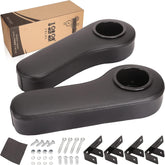
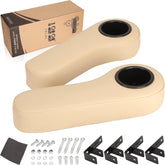
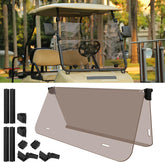
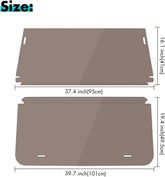

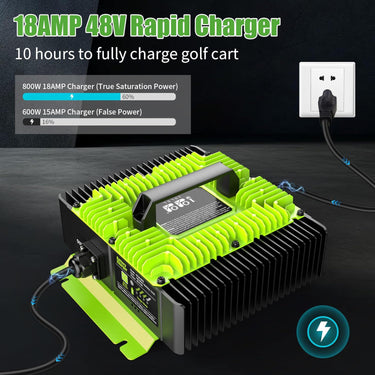
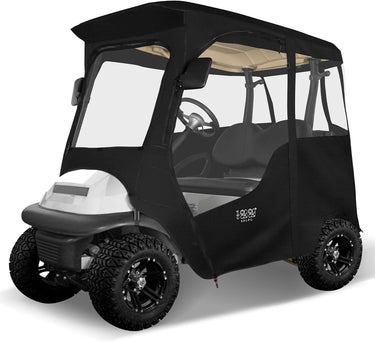
Leave a comment
Please note, comments need to be approved before they are published.